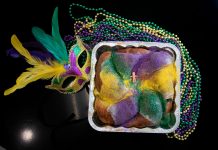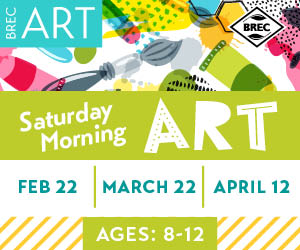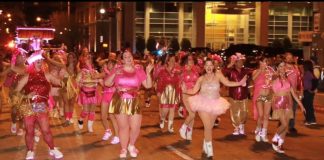Songs That Won’t Leave You Alone :: Revisiting Sinéad O’Connor As A Middle-Aged Mom
We lounged comfortably in the backyard. The boys played in the pool; I had a journal and fountain pen; my sister, niece, and mom had their phones. Out of the blue, Mom went, “Oh!” and, to our inquisitive looks, said “Sinéad O’Connor died.” The news felt incomprehensible. Sinéad O’Connor? The rebel yell against Margaret Thatcher’s England and religion that only worked if it hurt? She Who Was Banned From NBC For Life? The priestess? She was a force of nature, a name that channeled truth like a raw steak, so bloody you can’t look at it without physical discomfort. Died? What?
Since July 26, like many people I reckon, I’ve been re-listening to O’Connor’s repertoire and marveling at how she challenged expectations of all kinds at all stages of her career.
And I thought back to the night in 1986 when my best friend Kim and I drove east down Katella Boulevard in our corner of Orange County, CA, to Tower Records on Beach Blvd. Kim was looking, I recall, for the Toy Dolls. I was just … looking. Tower Records was the spot for alternative music before it had its own Top-40 list or radio station; alternative in its truest meaning. Ska, punk, improvisational jazz, 20th-century Swedish opera, deep tracks of 1930s blues singers, international singers unheard of in our part of the world. Tower Records introduced me to Francis Cabrel, Jeanne Mas, and Björk. That night, the store’s eclectic wares introduced me to a young Irish woman whose voice did things I wouldn’t universally classify as “singing.” Sometimes it grated the nerves in your teeth; you could almost look for shreds of skin on the floor. She sang a silken caress and an armory – sometimes both at once.
She was … everywhere.
The Tower Records staff had discovered her album The Lion and the Cobra and were playing her music on these huge (for 1987) video screens in the store, and I remember standing mesmerized before the image of her bald head, now transparent, now gold, now shot through with flames. “Does she love you? Does she NEED you like I doooooo?” she demanded, her words a gash through oxygen itself. It got better; it got worse. “You shoulda left the light on,” she crooned mournfully, an offering; then screamed “YOOOOUUUUU!!!!!! shoulda left the light on,” like a nail file over a scab. Her songs tightroped between the confessional poetry of Randall Jarrell or Anne Sexton, and the rage of Courtney Love in 1995 or Halsey in 2016. Sinéad stepped forward with anger and tenderness, woven together like a garment, invited me under her skin, and managed to create wholeness from the experience. She was grooves engraved in vinyl and I was a stupid teenager staying up too late at night, and still, she made me cry in wordless, hapless catharsis. Sinéad offered validation. Her honesty was brutal, and it extended the chance of redemption. Like the Israelites in the Book of Numbers, she made me feel like I mattered. I counted.


Her next album, I Do Not Want What I Haven’t Got, was released in 1990. I sank into it, start to finish – the Serenity prayer, the ascetic “I Am Stretched On Your Grave,” the poppy “Emperor’s New Clothes,” the wound-left-unhealed of “Black Boys on Mopeds,” the breathy vulnerability of “You Cause As Much Sorrow.” Unabashed, she pointed out her country’s failures and Britain’s failure as a colonial power over her country, putting the “ire” in Ireland. Still, she was much more than anger: “I never said I was tough, that was everyone else,” she sang – not in accusation, just acknowledgement.
These themes reappear in each subsequent album, from Universal Mother (1994) to Gospel Oak (1997), Faith and Courage (2000), I’m Not Bossy, I’m the Boss (2014). Even albums like Am I Not Your Girl (1992) – mostly covers, with a big-band backing her (and the sense that someone at Chrysalis Records wanted to capitalize on the trend of new voices singing old songs) – hums with that energy beneath the surface: her control in “Bewitched, Bothered, and Bewildered” leads to an eerie curling (possibly prescient) sound in “Gloomy Sunday,” made famous in the English-speaking world by Billie Holiday but also nicknamed “The Hungarian Suicide Song.” Each album opened a window into her fraught relationships: with her mother, her husbands, Ireland, her children, herself. That same window gave onto a world much grittier than the one I lived in – or perhaps it opened my eyes to the dirtiness our two worlds shared.


We were only three years apart, Sinéad and I, and through her music I learned to look beneath the veneer of my sheltered existence.
I received the rupture in my worldview with gratitude. Sinéad gave me knowledge. Her courage gave me courage to speak out against racial injustice, gender violence,, socioeconomic structures that reinforced/increased inequity – all the things keeping people separate from each other when we could be holding each other up, accomplishing so much more … Listening to her music, I saw that I could take my own mic and speak on behalf of people who had been silenced – bullied, threatened, belittled.
Sinéad O’Connor survived an abusive childhood, ripples of which echo through all of her work. She made music infused with grief and rage, howling in righteous anger. And after exploding into public performance like a cannon from Tchaikovsky’s 1812 Overture, she disappeared just as quickly, locked out by pearl-clutching wardens of acceptability. It was “cool,” for a time, to hate Sinéad O’Connor. She looked un-feminine when other alternative-music female stars – Madonna, Gwen Stefani, Sarah McLachlan, or Tori Amos, to name just a few – played up their femininity, whether for commercial or ironic purposes. How easy it was to dismiss her in 1992 when she ripped up that picture on SNL. Sinéad didn’t merely perform; she provoked. She got ordained as a (schismatic) priest, went through 4 failed marriages and as many baby daddys, converted to Islam, spent time in a psych ward more than once. Even before she took to the hard-hearted international stage, fame and public opinion cracked ugly knuckles waiting for her; could this girl barely past her teen years anticipate the way international media would bite into her, first showering her with gold then throwing dust at her name? Sinéad got cancelled before “cancel culture” was even a thing.
If, as a girl not much younger than Sinéad, my heart pounded to the rhythm of her activism, as a middle-aged woman I feel it pound at her experiences as a mother – the challenges of living in a body that bears life (“you know how it is,/ and how a pregnancy can change you”), the overwhelming nature of a mother’s love, the desperate struggle to keep custody of her daughter, the consuming grief when her 17-year-old son committed suicide. “If I have no other purpose in this life other than to put these four children on the earth, well, that’s enough for me to feel like I did something useful in this world,” she wrote in her 2021 memoir Rememberings. As with so much of her later life, Sinéad’s early artistic work foreshadowed the complicated wounds that happen when you have children: “Each of these/ My three babies/ I will carry with me./ For myself/ I ask no one else will be/ mother to these three,” she sang wrenchingly in 1990. Did she sing about her own actual child? About her siblings? Her mother, or her idea of her mother? The Father, Son, and Holy Spirit? The website SongFacts suggests that the song is about three miscarriages Sinéad endured. Whatever the “literal” meaning, if there even is one, Sinéad insisted that being a mother is raw and visceral, like being a lover. Harder. She put forth no illusions. “‘The song is perhaps a prophecy of not being the perfect mother … You have dreams of being a perfect mother to your kids, but maybe you don’t always turn out to be one (though you get better as you get older)’.” When I read about the abuse her mother inflicted on her, I wondered if having her own children called forth a traumatic response. I wish I could ask her.
If you consult Amazon Music, you will encounter only about 65% of Sinéad O’Connor’s œuvre.
Their streaming selection omits releases between 1994 and 2000 (with the exception of Gospel Oak, an EP that came out in 1997), and those between 2000 and 2014. Sinéad’s catalogue includes 11 studio albums, including compilations and cover albums; then there are several EPs and 80-plus singles with B-sides, to say nothing of the songs she recorded with other artists (U2, Roger Waters, Afro-Celt Sound System, Mary J. Blige, The Edge, Bomb the Bass, Peter Gabriel, Evamore, Moby …). What Amazon’s service does not include are the albums of her “in-between” years, the years after she got erased from the American music-culture scene – and that is a shame, because it limits the American audience to albums that got airplay or popular “approval.” But the absent albums represented formative work for Sinéad. She addressed the role of Catholicism in her life. She gave voice to the complexity of grieving an abuser. She explored the meaning of spirituality. She explored national, cultural, artistic, religious, and individual identity. She expanded.
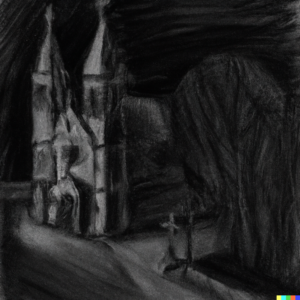

I have too many “favorite” Sinéad O’Connor songs to count, so I will offer instead my favorite detail about Sinéad’s albums, the times she departs from expectation and really makes you stop and listen. If you have ever felt a rebel, she has a song for that. If you’ve ever felt outside of things, she has a song for that. If you’ve ever been heartbroken. If you’ve ever lost a child, or a parent, or a true love … she has a song for that. “jesus and the M0ney changers.” “Tiny Grief Song.” “Famine.” “Lagan Love.” “O Filii et Filiae.” “All Kinds of Everything.” “Jah Nuh Dead.” “Rivers of Babylon.” “Dark I Am Yet Lovely.” “The Wolf Is Getting Married.” “Song to the Siren.” “Your Green Jacket.” “Take Me To Church” (whose video “quotes” “Nothing Compares 2 U” in a haunting, poignant way). “Harbour.”
I also won’t end with some heartbreaking quotation from “This Is To Mother You” or her lightning-rod a-cappella version of Bob Marley’s “War.” You can look those up on your own. Instead, here are the lyrics Sinéad wrote that, for me, best express her effect on me as a listener, and her own evolution as a performer. If she never found the peace she offered in her music, I hope wherever she is now she knows how much she has given to the weird kids of Generation X who found her by accident, and fell deep into her vision, and watched her rebound and rebound and rebound with fascinated admiration, year by year. I am sad she’s gone, her music fallen into a forever hush. My memory of her will linger – like the taper candles she once extinguished on the SNL stage in uncomfortable silence – illumined, a truth-teller, a strong woman. May her memory be for a revolution.
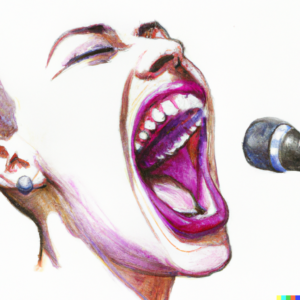

“Cause songs are like a bolt of light
And love’s the only love you should invite
… Songs that don’t let you sit still
Songs that mend your broken bones
And that don’t leave you alone”


